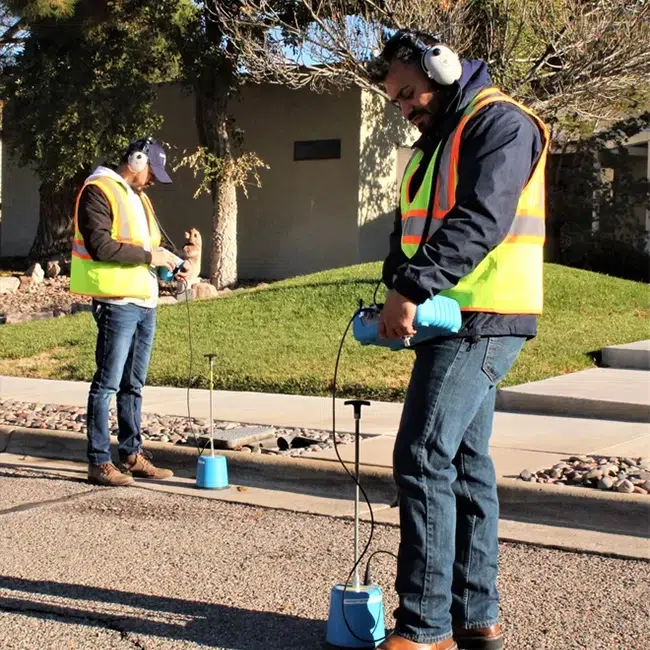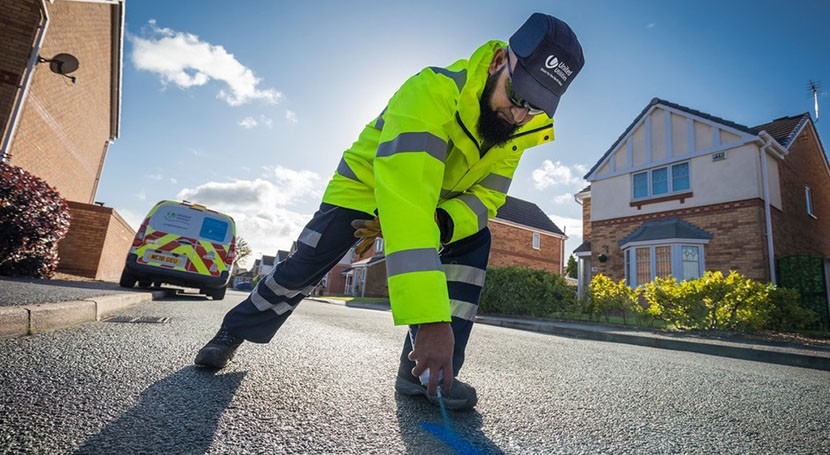Cutting-edge Solutions for Early Discovery of Water Leakages in Structures and Infrastructure
From sophisticated leakage discovery technologies to the deployment of IoT sensors for real-time monitoring, the landscape of leakage avoidance is progressing swiftly. Automated water flow evaluation systems are improving how leakages are identified and dealt with, paving the way for an aggressive strategy to water leak detection.
Advanced Leak Detection Technologies
Advanced leakage detection modern technologies, outfitted with cutting-edge sensors and algorithms, play a critical duty in swiftly recognizing and determining water leakages in various setups. These technologies utilize a mix of acoustic, thermal, and electro-magnetic noticing techniques to discover leaks precisely. Acoustic sensors discover the sound of leaving water, enabling accurate localization of the leakage source. Thermal imaging spots temperature changes brought on by water leakage, supplying an additional efficient approach for leak identification. Electro-magnetic sensors can determine adjustments in electro-magnetic areas brought on by water, supplying yet another layer of leakage detection capacity.

IoT Sensors for Real-Time Surveillance
In the world of modern-day water leak discovery, the assimilation of IoT sensors for real-time tracking stands for a critical development in improving proactive leak discovery abilities. These sensing units provide continual surveillance of water supply, providing real-time information on water flow prices, stress variations, and temperature changes. By leveraging IoT innovation, these sensors can identify even the tiniest abnormalities in water use patterns, enabling very early identification of prospective leaks prior to they escalate right into major issues.
IoT sensors transmit data to a central platform, where innovative algorithms analyze the details and create notifies or alerts when irregularities are detected. This real-time surveillance capability permits homeowner or center supervisors to quickly attend to leaks, decreasing water damages, reducing repair service prices, and conserving water sources.
Moreover, IoT sensors can be integrated with structure administration systems, permitting automated feedbacks to discovered leaks, such as shutting down water valves or turning on pumps to minimize the influence of leakages. On the whole, the application of IoT sensors for real-time tracking considerably improves the performance and performance of water leakage discovery in structures and facilities.
Artificial Intelligence Algorithms for Leakage Prediction

One trick benefit of utilizing machine discovering for leakage forecast is its Get More Information capacity to continuously learn and boost its precision with time. As more information is gathered and fed right into the formula, it can improve its forecasts and adapt to changing problems, inevitably enhancing the dependability of leak discovery systems.
In addition, artificial intelligence algorithms can aid in determining subtle indicators of leaks that might go undetected by conventional surveillance techniques. water leak detection. By assessing complex data sets in real-time, these algorithms can offer early cautions and signals, permitting timely treatment and precautionary upkeep to reduce prospective water damage view website and connected expenses
Using Thermal Imaging for Leak Discovery
Thermal imaging technology supplies an encouraging technique for finding water leaks in various systems and facilities. By utilizing infrared radiation and temperature differences, thermal imaging cameras can identify concealed leakages that are not conveniently visible to the nude eye. When water runs away from pipelines or structures, it frequently transforms the temperature of the surrounding area, developing temperature level differentials that thermal video cameras can capture. These temperature abnormalities are then equated right into visible pictures, highlighting the specific location of the leakage.
Among the vital advantages of thermal imaging for leakage discovery is its non-intrusive nature. Unlike conventional methods that might require getting into walls or floors to locate leaks, thermal imaging permits non-destructive screening. This not just conserves time and lowers expenses however additionally decreases interruption to the building or framework being analyzed. Furthermore, thermal imaging can rapidly check big locations, giving a comprehensive overview of potential leakage resources in a prompt way. On the whole, the usage of thermal imaging innovation improves the effectiveness and accuracy of water leak detection, making it a useful tool for keeping the honesty of buildings and infrastructures.
Automated Water Circulation Evaluation Solutions
How can computerized water circulation analysis systems transform the detection and administration of leaks in different systems and facilities? Automated water circulation analysis systems use an aggressive strategy to leak detection by continuously checking water circulation rates and patterns. By establishing standard information, these systems can swiftly recognize discrepancies that may show a leakage, allowing timely treatment to avoid extensive damage.
These systems use advanced algorithms to analyze real-time information and supply instant signals when abnormalities are spotted, permitting swift action to be taken. Furthermore, computerized water flow evaluation systems can click site be incorporated with building monitoring systems or IoT platforms, boosting total performance and allowing remote tracking abilities.
Furthermore, the information collected by these systems can be used for predictive maintenance objectives, assisting to recognize prospective weak factors in the framework before leaks occur. Generally, the execution of automatic water flow analysis systems can significantly enhance leak discovery and monitoring practices, eventually resulting in set you back savings, reduced water waste, and enhanced sustainability in structures and facilities.

Final Thought
To conclude, the integration of advanced leak detection technologies, IoT sensing units, machine learning formulas, thermal imaging, and automated water flow evaluation systems supplies ingenious services for very early detection of water leakages in structures and facilities. These innovations enable real-time surveillance, prediction of leakages, and reliable detection approaches to stop water damage and wastage. Carrying out these services can aid in preserving the stability and sustainability of water systems in different setups.